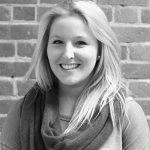
Bar Inventory, Inventory, Management
Why You Should Think About Bar Inventory in Weeks
By Brie Shelley

By Brie Shelley

Taking bar inventory is essential for running a successful bar. From hundreds of conversations with bar managers and owners every week, we’ve realized that the industry standard for thinking about inventory is in units or dollars.
While these are useful numbers to track, measuring inventory this way leaves you with a number of questions. For example:
As a result, a great supplemental way of thinking about bar inventory is thinking beyond just the dollars and units and diving into inventory efficiency, or a balance of inventory levels.
Calculating weeks’ worth of inventory is a great method for determining inventory efficiency and providing significantly more context to your inventory numbers, especially when comparing multiple product types and locations.
Thinking about inventory in terms of efficiency is a fundamental first step in effectively managing it. You might know how much your inventory is worth, but do you know how many weeks’ worth of usage that inventory represents?
To calculate weeks’ of inventory, use the following equation:
Sitting Inventory ÷ Average Weekly Usage = Weeks’ of Inventory
The basic goal for inventory management is to have enough inventory at any given time to support predicted sales until the next delivery and provide an additional cushion for potential sales spikes and late deliveries. By thinking about inventory in weeks instead of dollar value, you can directly link inventory levels to planned sales and focus on maximizing your return on investment.
Really think about how much of your cash you’re committing to inventory. Remember, this cash is just sitting on the shelves and can’t be used elsewhere. By thinking about inventory in weeks, you can more accurately project what inventory you can actually expect to sell.
| Rhonda’s on the Beach | Iguana Rick’s | |
| Beer | $5,000 | $5,000 |
| Wine | $6,000 | $3,000 |
| Spirits | $4,000 | $4,000 |
| Total | $15,000 | $12,000 |
Imagine you own and manage two bars: Rhonda’s on the Beach and Iguana Rick’s. At first glance, these bars might seem to be pretty similar. Their sitting inventory is listed in dollar amounts, and it looks like the only difference is that Iguana Rick’s has half the wine inventory of Rhonda’s on the Beach.
| Rhonda’s on the Beach | Iguana Rick’s | |
| Beer | $1,000 | $2,500 |
| Wine | $2,000 | $500 |
| Spirits | $1,000 | $500 |
| Total | $4,000 | $3,500 |
When you factor in average weekly usage and determine your weeks’ of inventory, you can give context to your inventory numbers. For the above example, although the sitting inventories are similar, we can divide by the average weekly usage to calculate inventory in weeks. This way, we can see which category levels are overstocked and take actionable steps to decrease them.
| Rhonda’s on the Beach | Iguana Rick’s | |
| Beer | 5 weeks | 2 weeks |
| Wine | 3 weeks | 6 weeks |
| Spirits | 4 weeks | 8 weeks |
As an owner/manager of multiple establishments, based on the recommended 2-3 weeks worth of sitting inventory per category, you can now conclude the following:
If you had measured sitting inventory by dollar value, you might have come to the unsupported conclusion that Iguana Rick’s was running a more successful wine program. But, by thinking about inventory in weeks, you can now see that Iguana Rick’s wine inventory is overstocked by three weeks’ supply.
By comparing the inventory performance of both establishments, you can see the inventory levels of Rhonda’s on the Beach are generally more balanced than Iguana Rick’s. This means your first focus should be reducing Iguana Rick’s wine and spirits inventories. After you’ve balanced these inventory levels, you should focus your efforts on reducing Rhonda’s on the Beach’s beer and spirits inventory.
If you have less sitting inventory, you have more money in your pocket. By limiting your ordering and understanding how many weeks’ worth of supply you’re sitting on, you can bring your inventory levels down to 2-3 weeks’ worth.
Remember, every dollar you spend on inventory is a dollar you can’t put towards other costs like payroll and marketing. Plus, product can be stolen, broken, or spilled. Sitting on 10 weeks’ worth of inventory isn’t as safe as having that cash in the bank. By decreasing the amount of product, you have sitting around, your money will be more secure.
The next time you think about inventory, think about it in weeks. When it comes to managing inventory, efficiency is a better indicator than dollar value. If you understand the weeks’ worth of supply that each category of product represents, you’ll be able to take active steps to reduce your inventory levels and increase your cashflow.
We’re here to help you run a better business and find out what BevSpot can do for you!
Schedule 15mins to chat with a product specialist
Start a FREE Trial Today! BevSpot offers full product education and account setup for all customers! No card Information needed!

In Sitting inventory,
“Iguana Rick’s has ‘twice’ the wine inventory of Rhonda’s on the Beach”
i think you mean ‘half’.
Thanks for the comment, Jason!